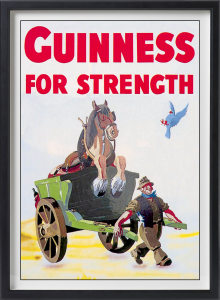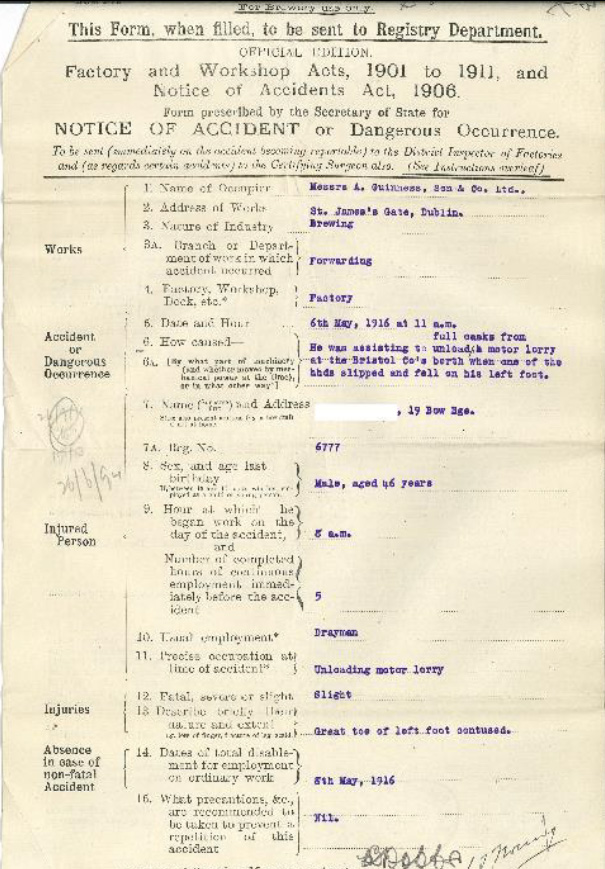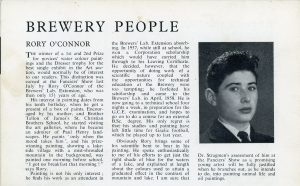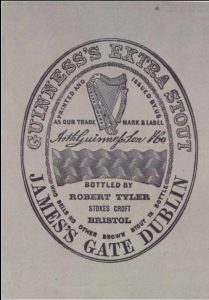You may have noticed the absence of a post last week. I’d like to be able to say that I was deep in my vast library thinking profound thoughts about the future of Irish genealogy. But no, the sun came out so I took the dog to the beach.
 I wasn’t completely idle, though. I went on the Guinness.
I wasn’t completely idle, though. I went on the Guinness.
At a professional development presentation organised by my accrediting association, Accredited Genealogists Ireland, and delivered by Guinness archivists Alex Marcus and Fergus Brady. It was a revelation.
Like most researchers, I’ve long been aware of the archive’s online catalogue (also available on Ancestry) and have found it interesting but a bit scanty. With 8,697 entries, it is obviously not a listing of all employees, and each result leads only to a very bare-bones record.
The archive itself is something else entirely. It holds more than 20,000 personnel files relating to deceased employees. For the majority of these, tradesmen or labourers, the files can include dates of birth, addresses, references, education, accident reports, changes of job, pension forms, medical information, physical descriptions, widows and orphans allowances, details of wives and children, even birth and baptism certificates. For the expanded family history of anyone who worked in Guinness’s in Dublin after the 1870s, these records are a goldmine.

One of the most interesting parts of the presentation was the explanation of the reasons behind the lack of online detail. Guinness was a spectacularly benevolent cradle-to-grave employer. Once a family got a foothold, they tended to bring in other members, with children, grandchildren, great-grand nephews following each other into the firm (see the remarkably guff-free Cillian-Murphy-narrated ad on this). So even the files of those who died a century ago might hold sensitive information relating to living people.
But there are no Germanic GDPR-style prohibitions. The archivists just check the files you’re interested in and apply good old-fashioned common sense. They’ll do this by email, but there’s no substitute for handling the files onsite yourself, and they welcome visitors (by appointment).
Apart from the files, the archive also holds a spectacular digitised set of the in-house publications, in particular The Guinness Harp Magazine, which documents the extraordinary range of extracurricular activities sponsored by the company, from choirs to chess clubs to tug-of-war teams, complete with professional-quality journalism and photography.

And there’s also a lovely collection of the customisable labels used to reassure drinkers that the pub-bottled stout they were drinking was genuine Guinness.

My lifetime supply can be parked just outside the house, please.
My husband and I can attest the Guinness is better in Ireland than in the US.
My ancestors are from Galway and Tyrone so unlikely they worked in Dublin, but you never know. It is good to know the company treated its workers so well.
Here in NJ we have the Guinness Mechanical Music devices collection, right at our local museum up the road.
https://morrismuseum.org/the-guinness-collection-of-instruments-automata/
It was a collection amassed by Murtogh Guinness and donated after he passed away, and it is huge, everything from little music boxes to giant calliopes. It is interesting and entertaining.
Tasty article.
What a marvelous reminder to look beyond the obvious records.
It’s nice to know that they treated their employees well.
Good for Guiness….I wonder if the practice goes on?
Thanks, John. It was a great talk, and very interesting. I’ll have to admit–those labels are something that I would love to take a closer look at. I think that there is definitely some local history there.
Great article John!
My wife and I spent 17 days in Ireland this past fall. We were never big fans of Guinness in the states. We drank many a pint while in Ireland, and were amazed at how different and delicious it tasted. After returning to the states we tried it again, and in our humble opinions it really tastes better in Ireland! Just our imaginations? We don’t think so. Maybe it does not travel well, or maybe it is much fresher in Ireland. Whatever the reason, there is a difference. Any other thoughts?
The stout for export and the home market are entirely different.
Draught Guinness for Ireland is not pasteurised, so could not possibly be sold outside Ireland.
Thanks. That makes perfect sense!!
Kind of like cola drinks when you travel abroad. I guess that the recipes vary a little.
Guinness’s was always well known for the care they took of their employees. In the 1970s & early 1980s they brought stout to their staff and retired staff who were patients in Dublin hospitals. Indeed, many patients who never worked for Guinness also enjoyed a bottle!